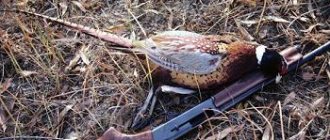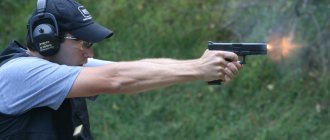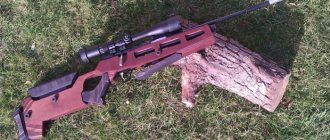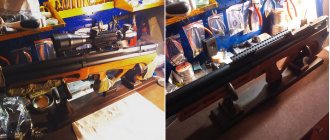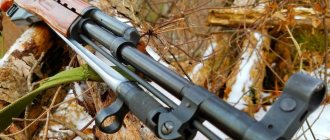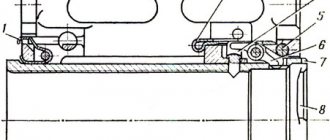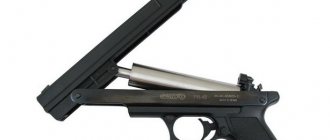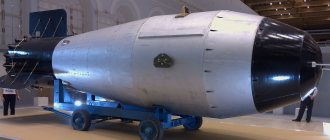Types of cartridges
While there is a wide range of cartridges to choose from, there is no one-size-fits-all for running deer. At the same time, the most popular cartridges for roe deer among hunters are 9.3x72 and 8x57 shells.
Cartridges 9.3×72
Practice has shown that the main factor in a successful roe deer hunt is the use of high-velocity bullets . So, from a distance of two hundred meters, a .222 caliber bullet can cause minimal damage to an animal carcass. Good penetration is characteristic of the .243 Winchester cartridge. When using it, there are practically no hematomas. A 6 mm cartridge made on the 5.6x39 base is also suitable.
.222 caliber bullets
Good muzzle velocity is also present in the .22-250 Remington cartridges. The formation of hematomas upon contact is not observed. However, this brand is very rarely used by Russian hunters.
.22-250 Remington cartridges
The 6x70 cartridge also has good muzzle velocity. It is 800 m/s. But very often bruises form when firing this projectile.
The most suitable cartridges for running roe deer should be lighter than 11 grams. With an initial speed of 800 m/s, even cheap models of this type of cartridge with an accurate hit lead to quick death, relieving the animal of painful shock. The disadvantages include the steep trajectory of the bullet. Therefore, for a successful hunt, you need to shoot with them in order to develop the skill. It’s also worth getting used to shooting with the 9.3×72 cartridge.
Types and habits of roe deer
There are two types of roe deer living on the territory of the Russian Federation: East Siberian and Western European.
Roe deer is the most popular ungulate, which is hunted throughout almost the entire territory of our country. These species differ slightly: the East Siberian is much larger and its weight can reach up to 60 kg. And the Western European one is smaller - only 25-30 kg.
The male roe deer is larger than the female, and he has antlers equal to 15-30 cm in length. Full horns develop only by the age of three years.
In summer the animal is predominantly red in color, and in winter it is grayish-brown.
The ungulate lives mainly in the forest. It is active early in the morning or in the evening after sunset. And in the daytime, the roe deer lays down, in the summer in tall grass or bushes, and in the winter it digs holes in the snow - this helps it shelter from the cold and predators.
Rifle gun
When hunting roe deer, shooters more often use rifled guns than smoothbore guns. And when hunting discreetly in areas with steppe or forest-steppe terrain, optics are used in addition to it.
It is necessary to choose a large-caliber type of weapon. It is characterized by accurate shooting to kill. Or it can cause such a painful shock in the animal that the prey will not be able to move further. The following brand models, as well as their various modifications, are considered high-quality weapons with good penetrating power:
- Tiger carbine;
- carbine "Moose";
- carbine "Vepr";
- "Bear".
Carbine "Tiger"
It is important that a gun of this type, no matter what country of manufacture it is, has an “angry” action. Its essence is that it reduces possible injuries to the animal, as well as the loss of wounded animals due to the weak accuracy of buckshot.
Rifled weapons ricochet when meeting the slightest obstacles, so it is recommended to shoot from them only in open areas.
Rifle gun
The use of small-caliber weapons is not recommended, since their use leads to the appearance of a large number of wounded animals.
How to hunt roe deer, process
The process of approach hunting itself is simple in its essence, but it requires knowing and taking into account a lot of features and nuances, as well as developing certain skills, such as silent movement.
How to track and approach
There are two ways to hunt roe deer in winter from the approach: by tracking and directly in explored places. In the first case, the hunter begins to track the animals, during the tracking process he finds them and, carefully creeping up, shoots. In the second case, he finds out in advance, taking into account the terrain, by tracks and visual observation, their possible location, bedding and feeding areas, and the next day he hunts there from the approach.
In both cases, for a successful hunt, a number of rules and conditions must be observed:
- For hunting, it is better to choose a cloudy and windy day; on such days it is easier to approach a roe deer. You need to go out before dark, good visibility will benefit you first of all.
- Before you start, check your gun and loads, you must be ready to open fire at any time.
- It is better to start searching in the open forest or along the edges, carefully inspect the territory.
- You need to move carefully, slowly and silently; while carefully examining the area, it is better not to move.
Important! You should always approach roe deer against the wind, so they won’t smell you and will hear you less.
- When tracking, you do not need to follow the trampled trail directly; these animals always monitor the space along their trail with special attention; they will smell you and run away. You need to move in a zigzag manner, periodically crossing the trail at right angles.
- A single animal behaves more cautiously than a group. It is better to track a small herd, this will increase your chances.
Healthy! During feeding, roe deer spend more than half of their time monitoring their environment.
- If a branch cracks under you while tracking, you need to freeze for 10 minutes so that the animals calm down.
- The same thing needs to be done if the roe deer turns its head towards you, most likely it caught the movement and did not notice you, its eyesight is not very good.
- You need to shoot only when you are sure of the shot, there is no need to rush.
- Sensing danger, the roe deer immediately makes several jumps, and then stops to find out the source of the danger; at these moments you need to have time to shoot.
- By tracking a group and killing one animal, you can follow the trail of others, who may pause, waiting for a relative.
Shotgun
Smoothbore weapons can be used in forested areas. When fired, trees, various bushes, and thickets of weeds are not an obstacle to its use. It is considered very reliable and has a very accurate sight. A buckshot shot, unlike a single bullet, sends out several lethal charges, increasing the likelihood of hitting an animal. Compared to rifled weapons, smooth-bore weapons have a higher level of safety.
Shotgun
The main disadvantage of this type of weapon is the inability to shoot accurately over long distances and the weak destructive power of such shots. In addition, the high cost of ammunition for smooth-bore guns makes their use inappropriate for roe deer hunting.
Hunting with traps
Hare hunting with traps is not in demand. After all, there are many interesting ways to hunt a hare in winter. However, not everyone has hunting dogs, and hunting with snares is prohibited, so in rural areas they sometimes use traps, because this is the easiest way to hunt.
Installation
When there is a lot of snow, the trails of hares are clearly visible near their feeding areas. They can often be found around villages in overgrown fields or at the edge of the forest. These are the places where traps are placed.
Trail snares are placed under the trail of a hare at a turn in the path, so that the likelihood of falling into a trap is greater. To do this, we cut out a layer of snow along with the snow and put a ready-made trap in the resulting hole, after which we put the snow in place. If a hare is caught in a trap with two legs, then it will probably stay there, but if the trap is tied with one, it may escape.
When installing a trap you need to know that:
- white hare behave more cautiously than brown hares;
- Hares rarely go out into the open.
Bait
To set the bait correctly, you need to know what hares eat in winter. Whites prefer aspen, and not freshly cut ones. You can also use sprigs of rowan and birch, adding a little oats or hay to them.
When starting a hunt for hare, remember that they prefer grassy food and therefore prefer hay and straw. They eat branches only at the end of winter, choosing apple, oak and willow.
Both species love vegetables - cabbage, turnips, carrots. They also go well with salt, so all baits can be watered with a weak salt solution.
Ammunition for smooth-bore guns
It is possible to create ammunition for roe deer hunting at home. To do this, you need to buy smokeless powder and polyethylene cartridges in hunting stores. “Falcon” gunpowder has proven itself to be good in the manual production of cartridges.
Polyethylene sleeves
The mechanism for making cartridges with your own hands is very simple:
- We place a polyethylene wad on the gunpowder.
- The second layer is a greasy wad made from felt materials.
- The third is a wood-fiber wad.
The last step is to attach the cardboard spacer, the thickness of which is 2 mm. Laying is done in rows. Each should contain the same number of pellets. Each hunter may have his own way of twisting the edges of the cartridge case, but the “star” method is recognized as the most reliable .
Twisting the edges of the sleeve with an asterisk
The diameter of the buckshot with which the cartridge is loaded must exceed 6 mm. It is also possible to use fraction No. 0000. To increase the accuracy of shooting, household bulk materials are added to the buckshot: flour or potato starch. In general, when hunting you will need no more than 10 rounds of ammunition for shooting. They must be calibrated before shooting. To do this, I use a ring for conventional weapons or a cylinder for self-loading weapons.
How to cut a carcass?
Each trophy requires immediate cutting after the hunt. If you hunt in the summer, then you generally need to immediately begin processing the prey so that the processes of decay do not begin.
This video is entirely dedicated to the cutting of roe deer, which was caught in the summer. The author films the entire process on camera in great detail. You will learn where to start cutting and how to do it further.
The carcass is processed directly during the hunt, so the moments with hanging a goat on a tree and putting pieces of meat into a special container for further transportation are demonstrated.
Equipment with buckshot and shot
To properly equip buckshot cartridges and the procedure for zeroing a gun, the hunter must have certain knowledge, skills, and experience. It is not recommended to use shell casings whose walls are made of thin metal or plastic for shooting buckshot. The former can cause gun barrels to swell, while the latter are unreliable for use in winter conditions.
The procedure for loading cartridges with buckshot and large shot has certain features. It has specific requirements. It is prohibited to pour large shot, such as ordinary shot No. 2-10, and buckshot into the cartridge case. The reason is that large pellets and buckshot go deeper between others located below.
As a result of a shot with such a cartridge, they become deformed and wedged. This affects the dispersion of the projectile after leaving the barrel, as well as accuracy and sharpness. To prevent this, the principle of matching the size of the buckshot and the size of the bore, made in the shape of a cylinder or having a muzzle constriction, is used.
As mentioned earlier, adding starch or talc to the projectile helps prevent the propping effect. Sometimes professional hunters connect buckshots with a rod or thread for accuracy.
Buckshot is distinguished:
- agreed upon;
- inconsistent.
Buckshot selected in this way is called coordinated, which, when laying one layer in the muzzle, does not have gaps between the walls of the barrel and the buckshot themselves.
Buckshot agreed
Nice shot of a roe deer
The plot of this video begins with footage of winter nature in an area where there are only minor bushes and rare trees. Somewhere in the distance there is a small forest area.
The hunter radios to his comrade that goats are running towards him. A few seconds later, one shot sounds, followed immediately by another bang from a gun.
Suddenly, a roe deer appears at the level of the main character's arrow line. In just a short time a shot sounds. He immediately runs to the place where the beast was running. It turns out that the hit could end the animal’s life. The trophy has been won.
The use of buckshot in hunting
Shooting a running roe deer or fingerling with a bullet quite often ends in a miss or a wounded wound. Therefore, it is better to use buckshot, which, even if aiming fails, can stop the prey.
Shooting buckshot is not recommended when hunting with a dog. There is a possibility of hitting your four-legged companion. When shooting from ambush, from a tower at night, it is better to use large buckshot in the absence of devices for night shooting.
When waiting for an animal on a tower, hunters use 7×62 caliber. A good overview, the inability of the animal to identify the shooter by smell, makes it possible to catch a roe deer without any problems. When hunting in a pen, it is prohibited to use buckshot.
Every hunter today has the opportunity to select cartridges for roe deer hunting. If factory models are not suitable for the model of a particular gun, it is possible to make cartridges with buckshot for smooth-bore or rifled weapons with your own hands.
How to hit an animal
Different animals move at different speeds, have different sizes, and so on. Based on this, it is obvious that shooting should be carried out differently. How to hit an animal and make a well-aimed shot, taking into account the specifics of a particular animal? About this in this article.
How to get a hare
They shoot at a hare when he runs out of the pen, from under a hound dog and from under himself, as well as from an explosion when hunting with a self-propelled gun. It is often possible to shoot at a sitting animal. Hunters consider it unethical to shoot a hare while lying down. The most sporting way is to raise it with a shout and shoot at the hijack or half-hijack. If the hare is sitting motionless, they shoot directly at the front of the carcass or at the head (in any position of the body), but such a shot is possible at a distance no higher than 45 m. At a greater distance from the hunter, it is more rational to wait until the hare turns sideways. Due to the very small cross-section of the animal’s body, it is possible (even most likely) that the carcass will be carried away by pellets. Remember: it is not recommended to shoot at a hare sitting with its back or chest towards you further than 40-45 m. From under the dog and from the pen, the hare either moves towards you or goes sideways. Aim at the hare running straight at you under its front paws. A leash is optional here. It is enough to place the hare on the trunks - and you can shoot. The side hare, which comes out in small jumps at close and medium distances (up to 35-40 m), can be simply targeted at the front of the carcass or with minimal anticipation. But when shooting at an animal moving at large swings, a lead of up to 2-3 corps is necessary. For hunters shooting while overtaking, it is recommended to “stick” the barrels into the hare and, moving forward, pull the trigger after sufficient clearance appears. Such shooting is most effective against a hare in an open field and at a decent distance.
When shooting at a hare in the forest, anticipation is most advantageous, since there may not be enough time to lead and overtake. Even in a sparse forest, trees and undergrowth interfere with shooting. A shot is possible only in gaps between them, gaps, clearings, small clearings, so remember that you need a lead, a short leash, and then a shot.
A hare that jumps out from under a shooter who was hunting by tracking or along a black (motley) path goes left, right, or strictly into the chase. As a rule, it jumps out no further than 10-20 steps from the shooter, but it can also jump out right from under the feet. In this case, preemption is not required. The left and right hares are shot, aiming for the body, preferably the front or head. Those leaving strictly forward are covered with gun barrels or, as hunters say, they are shot in the ears.
How to hit the fox and wolf
The running speed of these animals is almost the same and is divided into walk, trot and racing strides. A fox and a wolf are shot at while walking without warning, in the body. The same can be done at a leisurely trot. But when these animals go at large swings, anticipation is necessary. Oncoming animals are hit, like a hare, with a shot under the front legs, stolen ones - on the ears, and side, driven ones - with a lead of 1-3 lengths, depending on the running speed and distance.
How to hit a squirrel and marten from under a husky or by tapping
The expression “getting a squirrel in the eye” is, in my opinion, quite arbitrary. Firstly, it is almost impossible to examine the eye of a squirrel sitting on the top of a spruce tree, and secondly, even if a small-caliber lead bullet with a diameter of 5.6 mm hits the eye, half of the squirrel’s head will fly off, and the skin will no longer be considered first-class. So shooting squirrels with bullets is not recommended.
When the tree is tapped, which is pointed at by the husky working on the squirrel, the animal climbs to the very top and is well projected on the top of the tree. A targeted shot with shot using lessons in shooting at a stationary target with shot will easily remove a squirrel from a tree of any height.
The marten, having eaten a squirrel, often spends a day in the last vacated nest (gain). When tapping on wood, she almost always sticks her head out of it. If at this moment you shoot a shot at a marten, then when it hits, it often falls out. But if this does not happen, you will have to either cut down the tree or climb it. So it’s better to wait until the animal crawls out of the nest completely, and then shoot, aiming for the head, in order to spoil the valuable skin as little as possible.
How to hit roe deer with buckshot
I had to hunt roe deer a lot in Germany. In my opinion, this is the fastest and most difficult animal to shoot. Shooting roe deer with buckshot is prohibited abroad, but some of our hunting grounds allow shooting in pens with small buckshot.
While running, a roe deer not only moves quickly, but also simultaneously makes vertical jumps. Buckshot, to some extent, due to the width of the spread, compensates for the difficulty of aiming and aiming at the target. But I am categorically against shooting at animals with medium and large buckshot: too many wounded animals are killed, subsequently dying uselessly and painfully.
How to hit deer and wild boars from a tower
This is a fairly common hunt in Russia. Quietly and without sudden movements, sitting on a tower or seat, that is, a storage shed, the hunter has the opportunity to calmly select a certain trophy, carefully aim at the most lethal place and shoot. Although, of course, there are quite a lot of killing spots on the body of a large animal, it is enough to point the front sight or crosshairs at the side of a boar, deer, or slightly behind the shoulder blade - and you can be sure that the animal will not go far after the shot. But it should be remembered that when firing a bullet at a stationary target, it is completely unacceptable to pull or pull the trigger. The slightest lateral force on it takes the bullet away from the aiming point.
As we know, when grazing animals are on the move almost all the time. Therefore, when you notice that the animal has moved off, refrain from shooting or make a short leash after it and shoot at the moment of tracking. Believe me, it's not that difficult. There is a much greater chance of scaring off a sensitive animal with a careless movement or knock. In this case, an instant lead behind the fleeing animal and a targeted shot at the body without preemption are necessary. The possibility of the animals returning to their original place is unlikely, so they should not be released. It should, however, be remembered that a shot from a tower or storage shed is made from top to bottom, so the aiming point on the animal’s body should be slightly higher than with a direct shot from the ground. A bullet, piercing the body of a deer or wild boar from top to bottom at an angle, will precisely hit the central internal organs.
How to hit elk, wild boar, deer and roe deer during a driven hunt with smooth and rifled bullets
During round-up hunts, hunters with rifled carbines and rifles are placed on the flanks of the shooting line, as a rule, on the edges of forests, fields and wide clearings. These shooters must prevent attempts by animals to break out of the pen through the flanks. Therefore, they have to shoot at close, medium and long distances. Considering the enormous speed of a rifled bullet, there is no need to talk about lead when shooting at elk and wild boar at a distance of up to 100 m. The front sight of the rifle at the moment of the shot should be on the “meat” of the animal, that is, on the front part of its body. When shooting at longer distances and at fast animals (deer or roe deer), some lead is required, the amount of which can be calculated according to Table 1.
An error in aiming can be determined visually after a shot by following the fountain raised by a bullet in the snow or on the ground, and then making an appropriate adjustment for the second shot. German hunters use a whistle when hunting in open spaces. I myself watched how, after the hunter’s whistle, a rushing roe deer instantly stopped in the middle of the field and was shot at point-blank. But I myself have not tested this method in practice.
The rifle chain itself is built in the middle of the forest, along a road or a narrow clearing. It consists mainly of shooters with smooth-bore guns, who shoot at a distance of up to 45 m (according to the rules). The hunter, standing on the number, first of all outlines possible sectors of fire: clear gaps between trees, sightings, animal trails, all kinds of openings. Shooting through tree branches or bushes is ineffective, since the bullet can deviate from the trajectory at the slightest contact with them. A hunter usually notices a large animal (elk, wild boar, deer) walking ahead of time, before it approaches for a shot, or even hears its approach. When you see or hear an animal, you can raise your gun in advance to avoid the butt catching on your clothes and not to scare off the animal when it is nearby. Having launched it at a sufficient distance for a sure hit, you should select a clean gap from those previously planned and, quickly pointing the front sight at the killing spot, shoot with virtually no anticipation. In an area where shooting is permitted, in the forest, in most cases it is not necessary.
Shooting in the forest with a leash is not recommended, since the likelihood of a bullet hitting a tree or other obstacle is too high. As we already know, time passes from the moment the decision is made to shoot until the bullet hits the target. The hunter, unwittingly, risks getting into an obstacle in the path of the animal, since when shooting with a leash, the gun continues to move. How to be? You don’t have to shoot an elk or a wild boar from the moment it appears, but wait for the animal to approach at the intended location of the shot (it’s not difficult to guess), pointing the gun there in advance. When the animal changes direction, there is always time to throw the gun in a different direction.
The main killing sites of a large animal are the head, neck, heart and spinal cord. Based on my fairly extensive experience in driven hunts, I recommend not to philosophize and shoot an elk, deer or wild boar at the “side,” that is, at the widest front part of the carcass. This is quite enough for even the largest animal, if it does not fall immediately, then in any case, it will not go far. For a kilometer or more, it is mostly the “tryabushinniki”, that is, animals that have been beaten in the intestines, who go away. When aiming at the head and neck, the possibility of an error in aiming is quite high, even when shooting at a stationary animal. If time permits, then for more accurate aiming it is better to shoot at the area of the shoulder blade, slightly behind it. In this case, the lungs may be damaged, which is considered a killing shot. As for the boar, its neck is a tempting target, as it is much wider than other animals. Hitting it is a fatal wound.
How to hit a roe deer
The animal is relatively weak to wound, and hitting it with a heavy 12-gauge lead bullet will not allow it to escape, even if vital organs are not hit. On the other hand, this is the fastest-footed animal, so it is very difficult to hit the target accurately. My advice: pull the trigger as soon as the “meat” of the running goat is on the front sight. The opportunity to target her more accurately may not present itself.
Intuitively, the hunter points the fly at the largest part of the animal’s body – the front part of the body. She is also the most lethal.
In my memory, all the ungulates that were beaten on the body in the area of the shoulder blade went to the hunters. Of the two mouflon stags I caught during a driven hunt, one received a bullet from a smoothbore gun in the heart, and the other in the sacrum. Both remained in place after the shots, but the second trophy can be classified as accidental. Of course, you shouldn't aim at the sacrum. A deer or elk running straight at a hunter needs to aim straight at the chest - this is a killing shot. But a wild boar, which is shorter than a man, can be shot in the middle of the forehead. At close range, a smooth bullet can easily pierce the skull of a boar of any size, and a rifled one even more so.
Table 1
Movement speed and some characteristics of birds and animals necessary for calculating and selecting a fraction number
| Names of birds and animals | Average driving speed | Case length, cm | Weight, kg | ||
| m/s | km/h | average | maximum | ||
| Teal | 20,0 | 72,0 | 25—30 | 0,2—0,5 | 0,6 |
| Snipe | 15,3 | 55,0 | 30 | 0,108 | 0,125 |
| Woodcock | 7,0 | 25,0 | 34—36 | 0,375 | 0,45 |
| Great snipe | 7,0 | 25,0 | 20 | 0,12 | 0,15 |
| Mallard duck | 16,0 | 57,5 | 50 | 1,0—1,5 | 2,0 |
| Goose (gray) | 22,0 | 79,2 | 90 | 2,6—4,5 | 5,0 |
| Grouse | 8,3 | 30,0 | 45 | 1,6 | 1,7 |
| Capercaillie | 15,0 | 54,0 | 90—112 | 1,5—5,5 | 6,5 |
| Grouse | 6,5 | 23,0 | 35 | 0,46 | 0,58 |
| Pigeon | 16,7 | 60,0 | 42 | 0,52 | 0,62 |
| Bustard | 15,0 | 54,0 | 100 | 4—5 | 6,5 |
| Pheasant | 8,3 | 30,0 | 60 | 1,2 | 1,5 |
| Quail | 11,0 | 40,0 | 15 | 0,11 | 0,12 |
| Partridge | 9,7 | 35,0 | 40 | 0,45 | 0,5 |
| Crow | 14,0 | 5,05 | 47—50 | 0,7 | 0,75 |
| Hare | 8—10 | 28—36 | 60 | 4—6 | 7,0 |
| Elk | 4 (trot) | 14,4 | 250—300 | 450—500 | 600 |
| Deer (deer) | 4 (trot) | 14,4 | 300 | 150—200 | 250 |
| Boar | 4 (trot) | 14,4 | 200 | 80—150 | 320 |
| Roe | 3 (trot) | 10,8 | 140 | 30—50 | 60 |
| Saiga antelope | 14—15,3 | 50—55 | 130—135 | 37,0 | 40 |
| Fox | 3 (trot) | 10,8 | 60—90 | 5—8 | 10 |
| Wolf | 3 (trot) | 10,8 | 170 | 65—70 | 80 |
| Raccoon dog | 3 (trot) | 10,8 | 85—95 | 9 | 12 |
S. Losev. Magazine "MASTERGUN" No. 151
Rabbit shooting technique
A correctly selected number of hare fractions will not provide the result. You can have excellent eyesight and the most expensive gun, but regularly miss the mark when hunting. Hunters attribute their mistakes to the weapon, to the shooting conditions, and only the last thing they think about is their technique. But following a few simple rules will greatly simplify the hunting process, and hare shot is last on this list.
- How comfortable is the gun in your hands?
- Which eye is dominant, right or left?
- It is necessary to zero the gun in order to know the recoil force and use adjustments to the sight.
- The weight of the gun and its dimensions must correspond to the hunter’s build.
No matter how quickly the shot flies at the hare, remember that in this short period of time it will have time to move 1-1.5 m. It’s worth shooting ahead of the curve. If a hare runs towards a hunter, then the shot is fired at the animal’s legs; if the side is exposed to you, then the aim is slightly in front of the head. When the hare leaves, the shot is fired at the ears, between the so-called slingshot or Roman numeral V.
In the end, it’s up to you to decide what kind of shot to shoot the hare with. In winter, they even use a zero for the hare. But while there is no experience and not enough personal observations to draw a conclusion, use small shot for the hare. It is small and hits farther and is quite capable of piercing the skin of an eared bird; 5-6 pellets stop both birds and small game. The smaller the shot, the more likely the success, especially if you don’t have a hunting dog, the likelihood of being wounded is high. A hunting dog will significantly diversify the hunting process, because it will see and smell what is inaccessible to humans. If you still don’t have such a faithful friend, think about it. Don't just kill game. After all, even a wounded hare can get into the weeds so that it will be impossible to find him without a dog.
